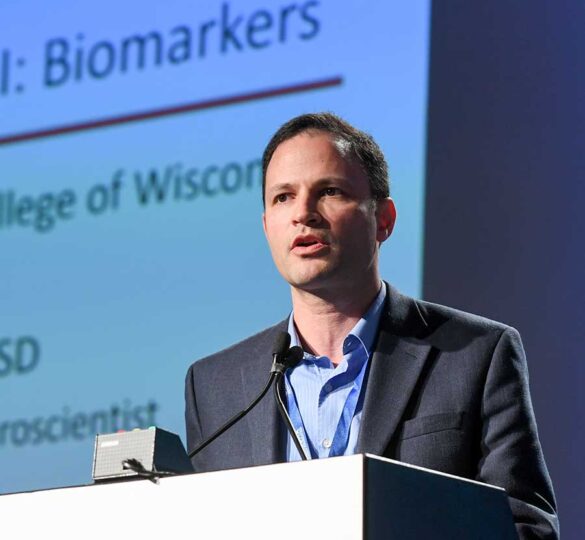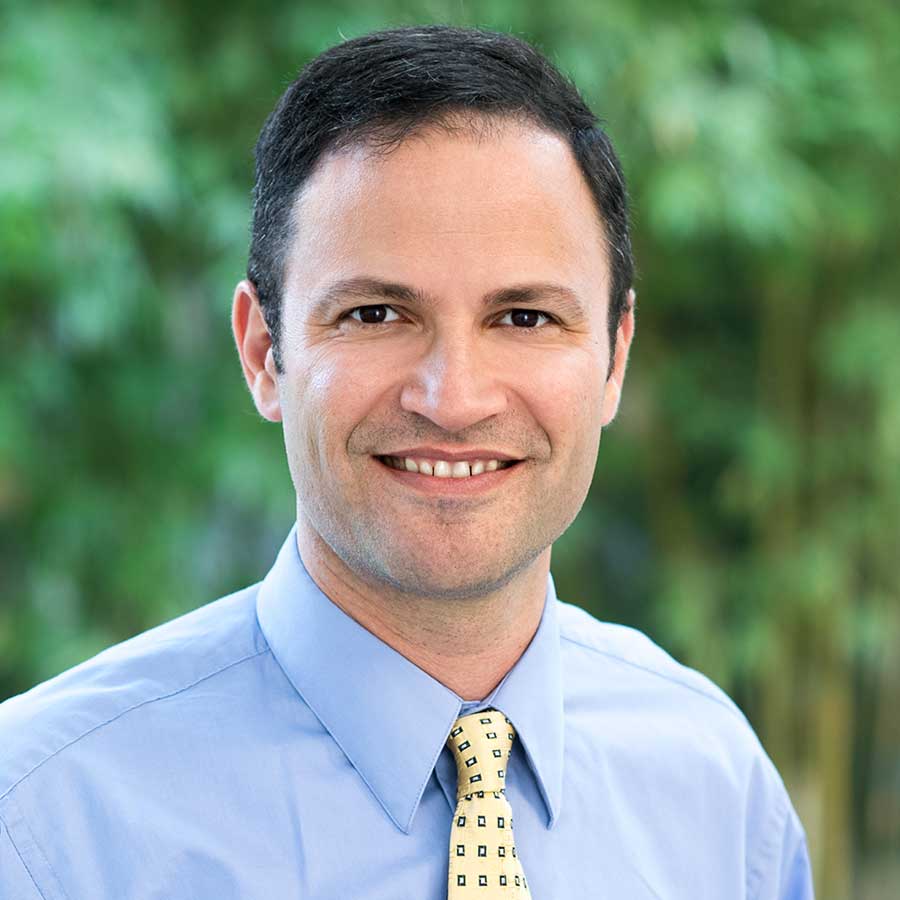2018 Glaucoma Research Update: Dr. Jeffrey Goldberg’s Laboratory at Stanford
Dr. Goldberg's glaucoma research is directed at neuroprotection and regeneration of retinal ganglion cells and other retinal neurons.

Jeffrey L. Goldberg, MD, PhD is a principal investigator in the Catalyst for a Cure Biomarkers Team (CFC2) funded by Glaucoma Research Foundation in San Francisco, CA.
Catalyst for a Cure brings together scientists from different backgrounds to work collaboratively to understand glaucoma and find ways to improve treatment and ultimately cure this blinding disease.
Dr. Goldberg’s research is directed at neuroprotection and regeneration of retinal ganglion cells and other retinal neurons. His laboratory at Stanford University School of Medicine is developing novel stem cell and nanotherapeutics approaches for ocular repair, studying retinal ganglion cell development, survival and axon regeneration in glaucoma, and investigating the cellular basis for the developmental loss of axon growth ability.
Watch the video for an update from Dr. Jeffrey Goldberg’s lab at Stanford.
Video Transcript
Dr. Jeffrey Goldberg: Glaucoma is really difficult to diagnose and particularly to diagnose if people are getting worse, because the only tools we have to do that right now — we really need to watch patients over a couple of years and see them get worse to know that they’ve been on that track.
We have no real way of saying today to a patient sitting in the chair in front of us, “What do the next couple of years hold for you? Are you on adequate therapy? Should we be doing more? Can we be doing more?” We can’t predict who’s going to get worse in these next couple years. We can only look back.
One of the new technologies that I’m really excited about uses advanced imaging techniques using adaptive optics and visible light OCT to image the metabolic health of the retina and particularly of the retinal ganglion cells and their axon fibers as they course through the retina and enter the optic nerve.
The idea that we can ask questions about the metabolic health and function of the retinal ganglion cells, not just whether they’ve been lost over the last few years but how happy are they today and are they responding to therapy, that’s going to be enormously powerful.
Right now all therapy for glaucoma is directed at lowering eye pressure, but the idea that we could develop therapies and test them in people that really target the retinal ganglion cells and the axon fibers going into the optic nerve — that, I think, is the most exciting new frontier for the premise of restoring vision and protecting vision in glaucoma.
There are a couple of ways that we’re looking at doing that. Neuroprotection is one. Neuroprotection refers to our ability to keep the cells alive despite the insult of glaucoma. Neuroenhancement is also very exciting. There’s the idea that we could give the cells a ‘booster shot’ and take sick cells that weren’t functioning for a patient’s vision and make them more functional again and maybe make the patient see better in an acute or short time frame.
In the preceding years we made enormous progress identifying what should we be trying to measure in glaucoma to provide new biomarkers for this disease. This past year has been very exciting because we’ve moved a number of these new biomarkers into human testing. In a series of human clinical trials, we’re now testing some of the new adaptive optics imaging modalities, some of the new OCT-based modalities.
We’re also testing a new kind of visual field test where we’re actually measuring the signals that go from the eye to the brain in glaucoma patients. Any or all of these, we think, will give us great new insight into the disease, into whether patients are progressing and in particular into whether they’re responding to new candidate therapies that we’re beginning to test in our patients.
Without the Glaucoma Research Foundation seeding this collaborative effort, I don’t see where the two neuroscientists and the two optical engineers would have come together to tackle this problem. It’s been enormously fun watching, over these last few years, the progress that we’re making in the laboratory translate into progress that we’re making on the engineering side and moving that right into human testing.
I don’t think any of that would have come to be without the seeding from the ‘Catalyst for a Cure’ program. We already in this initial term have positive signals on a number of our projects. Our new visual field test that helps detect the earliest signs of glaucoma is already showing some hints of positive effects. We’re now applying our new imaging technologies to patients in clinical trials for new therapeutics.
We’re very excited to start analyzing those data and to see both whether the biomarker is effective and, of course, whether these new therapies are working in our patients.
We’re so much closer to a cure now than we were years ago. For the first time we’re testing new candidate vision protecting or even vision restoring therapies in our glaucoma patients.
By using these new technologies to image inside their retinas, to image their retinal ganglion cells, their optic nerve fibers, we’re now gaining insight into whether these therapies are working. Whether or not the current class of therapies ends up being a cure for glaucoma or a future one still to be tested, remains to be seen; but for the first time we’re really able to test and answer those questions.
If it weren’t for ‘Catalyst for a Cure’, I don’t think we’d have made the progress we’re now making in moving candidate therapies out of the laboratory and into human testing.
First posted on February 21, 2018; Reviewed on May 18, 2022

Jeffrey L. Goldberg, MD, PhD
Jeffrey L. Goldberg, MD, PhD is Professor and Chair of Ophthalmology at the Byers Eye Institute at Stanford University School of Medicine. Dr. Goldberg is a scientific advisor for the Catalyst for a Cure Vision Restoration Initiative (CFC3).